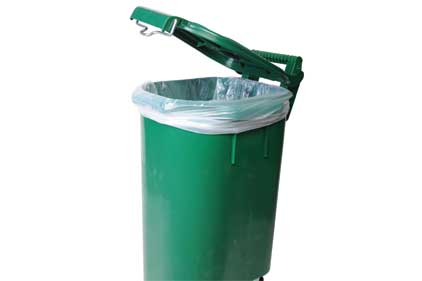
|
| Although its most common consumer application is in bags, compostable film can be formulated at the film stage for a variety of applications. |
Compostable film is no longer a new product, but it is still making its way into many suppliers' product mix. Here, Flexible Packaging sits down with Haremar Plastic Manufacturing executive Cheryl Babcock to talk about some of the opportunities in the category.
Q:Can you tell us about some of the more innovative applications for compostable film?
A:Yes. One of our strategic resin suppliers, BASF, has been involved with the Seattle Mariners baseball club on an innovative sponsorship project called Sustainable Saturdays. The cornerstone of the partnership is BASF's compostable resin product, ecovio®, which many of you may be familiar with. The club has used ecovio-powered food packaging to contribute to the effectiveness of its existing closed-loop waste system.
A closed-loop system is a waste management strategy in which all incoming waste is composted, reused or recycled.
With so many convenience products available, you can see that food packaging can play a huge role in achieving that goal. (We actually contributed to a prototype peanut package for the project.) As well, BASF sponsors Sustainable Saturdays at the stadium, which uses in-stadium signage and ecovio-powered product giveaways to get Seattle citizens on board with sustainability.
Q:Why is compostable film almost always green or grey in color?
A:Although customers often want sustainable products to speak for themselves by being green in color, compostable film is actually quite versatile. More sophisticated film suppliers can offer compostable film in a variety of colors, or even in a two-color co-extrusion, helping laminators, converters and consumer packaged goods companies meet their brand, shelf-appeal and corporate social responsibility goals.
Q:Can compostable films beused in a multi-layer film?
A:Yes. One way to maximize packaging performance while helping customers meet their sustainability goals is to include compostable films in multi-layer products. This can help customers achieve their goals without compromising performance. For example, a five-layer film could embody a glossy, high-impact skin layer with recycled and/or compostable resins in the interior layers.
Q:What other products can compostable film be used for?
A:Although its most common consumer application is in bags, compostable film can be formulated at the film stage for a variety of applications, including: courier bags, shrink applications and mulch film.
Q:How do end customers recoup their investment in this premium product?
A:Unlike regular waste, which costs money to send to landfill, products made of compostable film actually contribute to the value chain because the resulting dirt can be sold for agriculture or landscaping purposes. So, although compostable films may cost more than traditional polyethylene films, those costs have the possibility of being at least partially recouped, meeting both cost and waste-reduction strategies.
Haremar Plastic Manufacturing Ltd
(905) 761-7552; www.haremar.com

